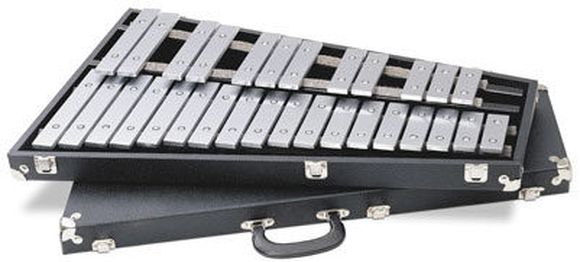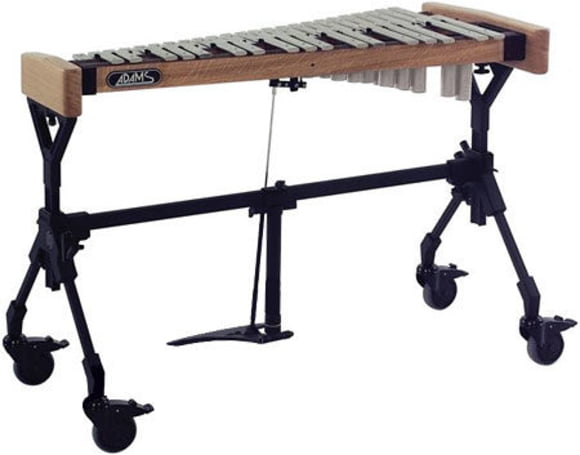5. Glockenspiel
The glockenspiel is used in symphony orchestras, school bands and pit orchestras. Its sound is bright, metallic and piercing, with a usual range of 2 1/2 octaves. A narrower range does not necessarily indicate an inferior instrument.
Several types of glockenspiel are available. Student/toy models often have thin bars with the names of the notes stamped on them. These are often used for educational purposes due to their lower cost. Their thin bars lack the tone and sustain necessary for serious use.

Luggage glockenspiel glockenspiels come mounted in a trapezoidal box often with a removable lid that can be placed on a table or stand for playing. These units are highly portable and are very common in the USA. They have thicker bars that produce a professional sound with greater sustain than student models. Professional units with an undercarriage, resonators and a sustain/dampening pedal are more common in Europe, in particular in Germany. These units have the most versatile sound of all, similar to that of the vibraphone. Compared to this type of instrument, the luggage glockenspiel has a more pointed, bright sound, whereas models with resonators have a richer sound with greater volume and sustain as well as the ability to dampen notes. Luggage instruments have to be dampened with the fingers.
Mallets
Glockenspiel mallets are harder than those used for vibraphone, xylophone and marimba. These mallets typically have a hard plastic or even metal head that helps create the penetrating sound that the glockenspiel is known for. Hard rubber mallets may be chosen for smaller ensembles or when a quieter sound is required. Softer mallets usually dont work very well.




